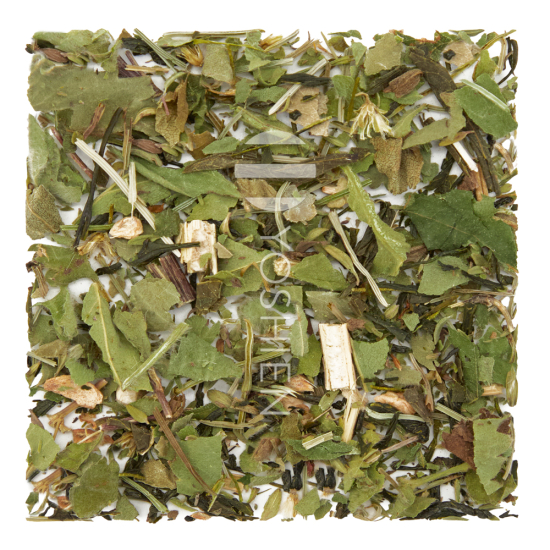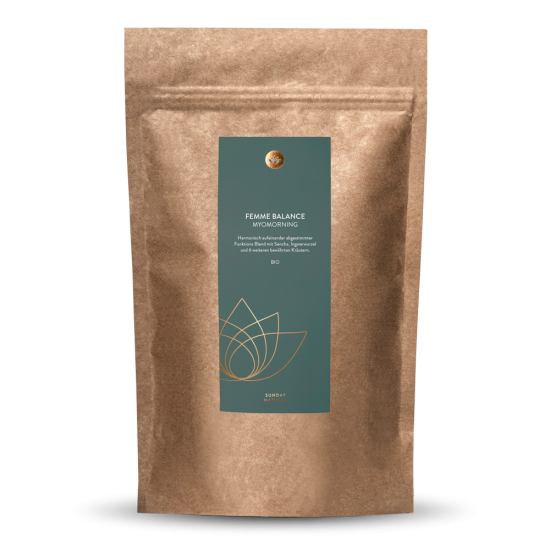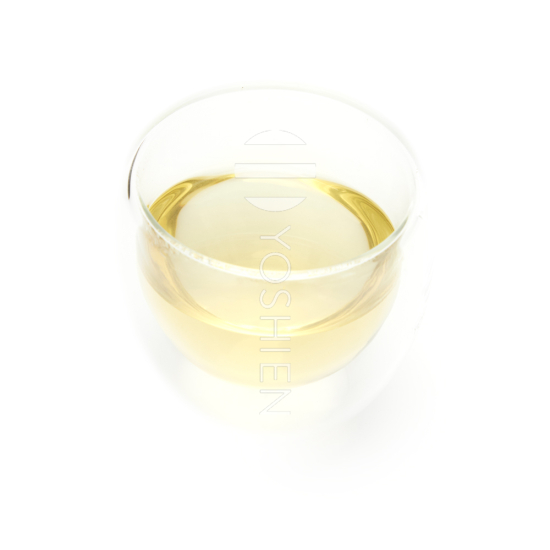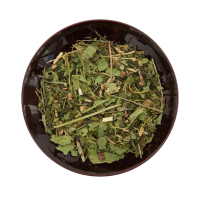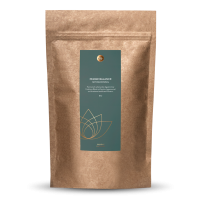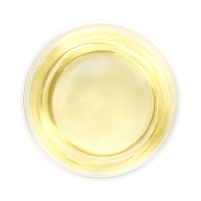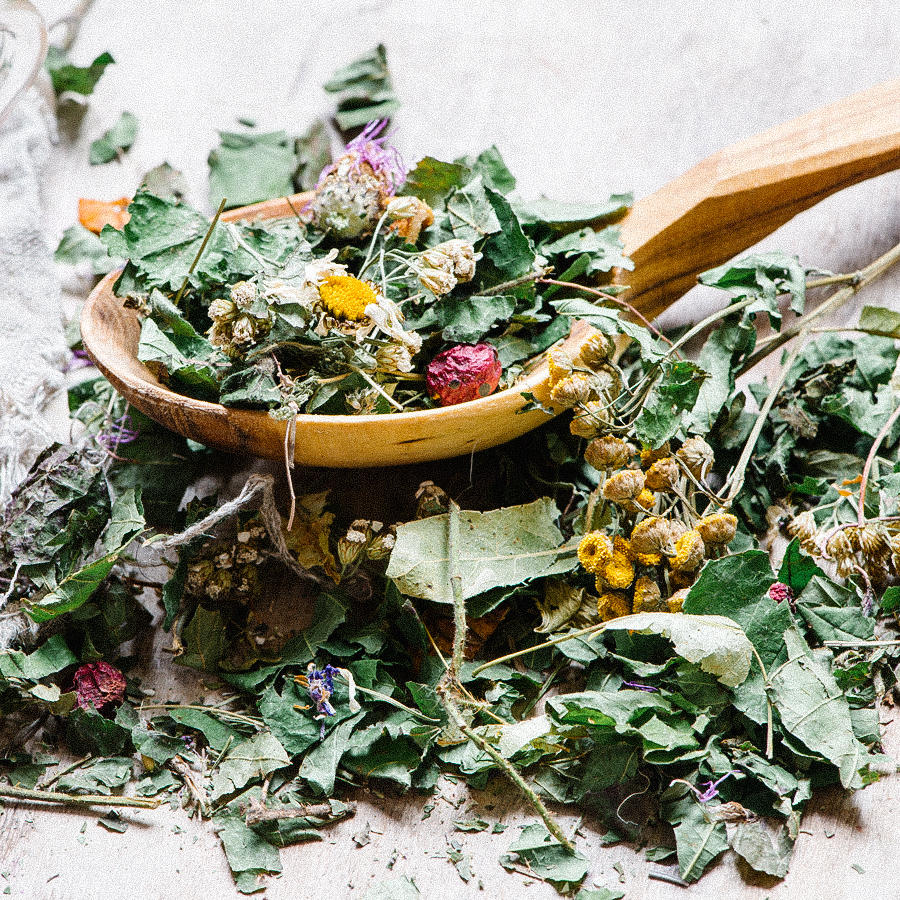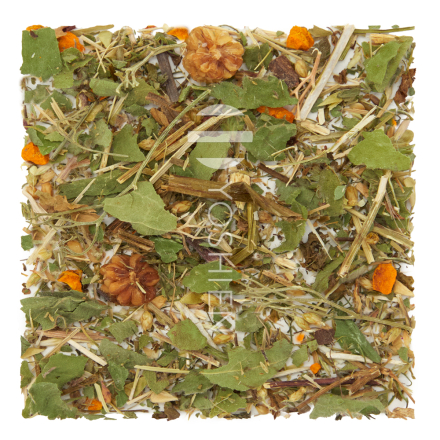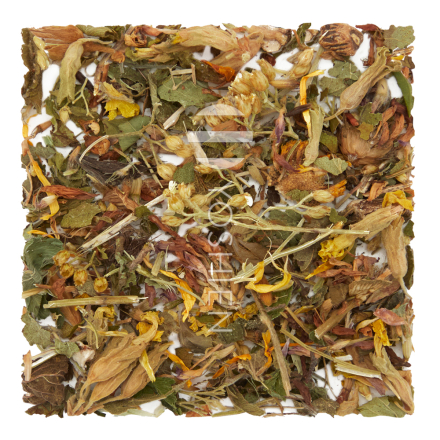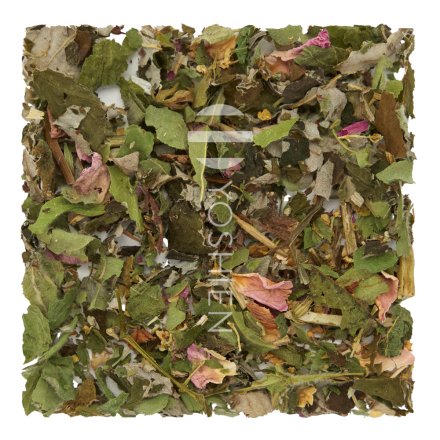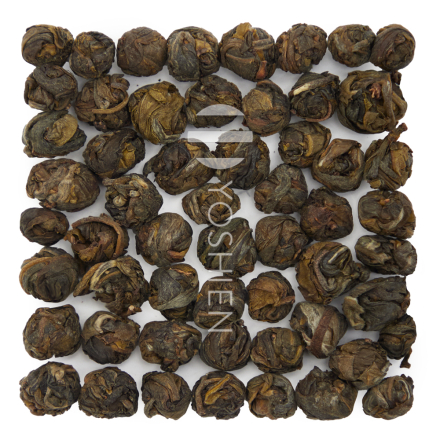Sencha Green Tea
Tea (Camellia sinensis) is traditionally cultivated in a shrub-like form. In many countries, tea is enjoyed to support overall wellbeing. The sun-rich climate in the growing regions promotes the concentration of valuable compounds in the evergreen tea leaves. Green tea, in particular, is known for its high content of catechins and chlorophyll, as well as amino acids and vitamins.
Lady’s Mantle
Lady’s mantle (Alchemilla) belongs to the rose family (Rosaceae). Its species are found across Europe, Asia, and Africa, thriving particularly well in higher altitudes, with around 300 species present in Europe alone. Its name, Alchemilla, speaks for itself and hints at its magical qualities: Since ancient times, the droplets of water that appear on the inner surface of its leaves have been regarded as a healing remedy.
Lemon Thyme
Thyme (Thymus vulgaris) has been valued since antiquity for its invigorating and strengthening properties. In the Middle Ages, a sprig of thyme symbolised courage and strength. Thyme was also used as incense in many ceremonies to honour the gods. In traditional herbal lore, thyme has been applied in a wide range of uses and remains popular to this day – not least as an aromatic Mediterranean herb.
Goldenrod
European goldenrod (Solidaginis virgaureae herba) has been known as a useful plant for centuries, with versatile uses ranging from medicine to dyeing textiles. It wasn’t until the 17th century that the tall goldenrod (Solidago gigantea) was introduced to Europe. As an invasive neophyte, it prefers the open woodlands and dry forest meadows of Europe and North America. This plant heralds the end of summer with its bright yellow blossoms.
Horsetail
Around 400 million years ago, horsetail (Equisetum arvense) grew as tall as trees and, together with giant ferns and mosses, formed vast prehistoric forests. Like those ancient plants, horsetail does not produce flowers but reproduces through spores. In spring, it appears as a pale, stem-like shoot that disappears after a short while. Later in the season, green summer stems emerge, which were once commonly used to polish metal.
Ginger Root
True ginger comprises around 60 species and belongs to the ginger family (Zingiberaceae). It likely originates from India and Sri Lanka and is now cultivated in various subtropical and tropical regions around the world. The plant can grow to a height of 50 to 100 cm, developing thick stems and long, reed-like leaves. Its flowering stem emerges from the aromatic root and can reach up to 25 cm in length, bearing petals that range in colour from yellow-red to deep violet.
Mulberry Leaf
Mulberry leaves (Morus folium L.) have long been valued as a beneficial plant, not only in Asia but in other parts of the world as well. Originally native to the temperate and subtropical regions of the Northern Hemisphere, excluding Europe, the mulberry tree was introduced to Europe in ancient times, where it found a wide range of uses.
Birch Leaf
The birch tree (Betula pendula) belongs to the birch family (Betulaceae). There are around 40 species of birch, with a range extending from Central Europe to Asia and the Americas. Both the leaves and the bark of the birch have a long-standing tradition of use in medicine, both internally and externally.



